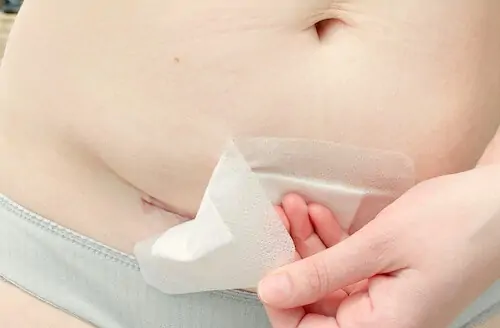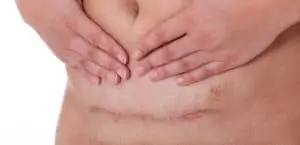Finding out that you’re going to have a c-section can be quite scary, and then someone tells you how many layers are cut during a c-section, causing you to freak out even more. Is it possible that they really have to cut through several layers to get to your baby?
The answer is – yes, you have several layers that stand between you and your baby. That’s a good thing; it keeps your baby protected, but it makes for more work for your OBGYN and surgical staff.
Please don’t freak out; you won’t realize that they’re cutting through so many layers. It’s not as scary as it seems!
How Many Layers Are Cut During a C-Section?
Your doctor and staff will cut through a total of seven (or more) layers before arriving at your baby. That seems like quite a lot, but each layer is relatively thin, and each serves a purpose to your body. It’s no wonder you feel sore after the surgery – a lot happens to your body during this surgery.
During your c-section, your doctor will cut through the:
- Skin
- Fat
- Rectus Sheath – coating outside of the abdominal muscles
- Rectus – your abdominals. If you’re wondering are abdominal muscles cut during the c-section, the answer is YES!
- Parietal Peritoneum – first layer that surrounds the organs
- Loose Peritoneum
- Uterus

While there are seven layers, some of these layers have layers within them. For example, the uterus is made of the perimetrium (outer layer), the myometrium (muscle layer), and the endometrium (inside layer). All of these must be cut for the incision, and your doctor will take great care with each cut to avoid vessels.
Note that:
The 8th layer is not always there, so we didn’t include it, and most don’t include it in the count. That would be the amniotic sac. If your water broke before you came into surgery, your doctor wouldn’t need to cut this layer, but for women with a scheduled c-section, the amniotic sac must be cut as well to reach the baby.
Women who had prior c-sections might also have adhesions, which your doctor would encounter after the Peritoneum. It’s not uncommon for adhesions to develop on the bowel, bladder, omentum, anterior abdominal wall, and anterior uterus. Adhesions must be cut through as well to deliver the baby.
How Does The Doctor Make The Cuts?
After you receive anesthesia, your doctor will use a combination of different sharp instruments and blunt extensions to go through each layer before reaching your baby. Don’t be surprised if you hear strange sounds, such as a machine they use to cauterize small blood vessels to reduce bleeding. That’s normal!
Even though it seems so complicated and involved, the process from the first cut to reaching your baby takes 5 to 10 minutes, at most. Typically, it takes longer if you have had previous surgeries, causing your doctor to work through adhesions.
Once your doctor reaches the uterus, you’ll hear some strange suctioning sounds. Your doctor is removing the amniotic fluid to make room for your doctor to reach your baby’s head. When you hear that, you know you’re about to meet your baby!
No Wonder Recovery is So Hard!
Ladies, give yourself a break. Your doctor cuts through your abdominal muscles, which control and contribute to many significant movements that you do each day without realizing it. They stabilize and support your core, and once they’re cut, each action can be uncomfortable until they start to mend.
Tissue healing happens aggressively for the first three months after your surgery, but it can take six months to a year for a full recovery. That’s why your doctor wants you to stay away from heavy lifting or any strenuous physical activity for several weeks after your surgery. Your body went through a lot, and now it needs to focus on healing.
Hey, this is Linda. My biggest accomplishment in life is being a mother of four children. Their current ages range from almost ten years old down to 20 months old.
I’m passionate about writing parenting articles because I understand so well all of the problems and trials you face as a parent. From breastfeeding woes to budgeting problems and behavior problems, along with everything in between, chances are I’ve faced it over the last ten years. Read more about Linda here.






